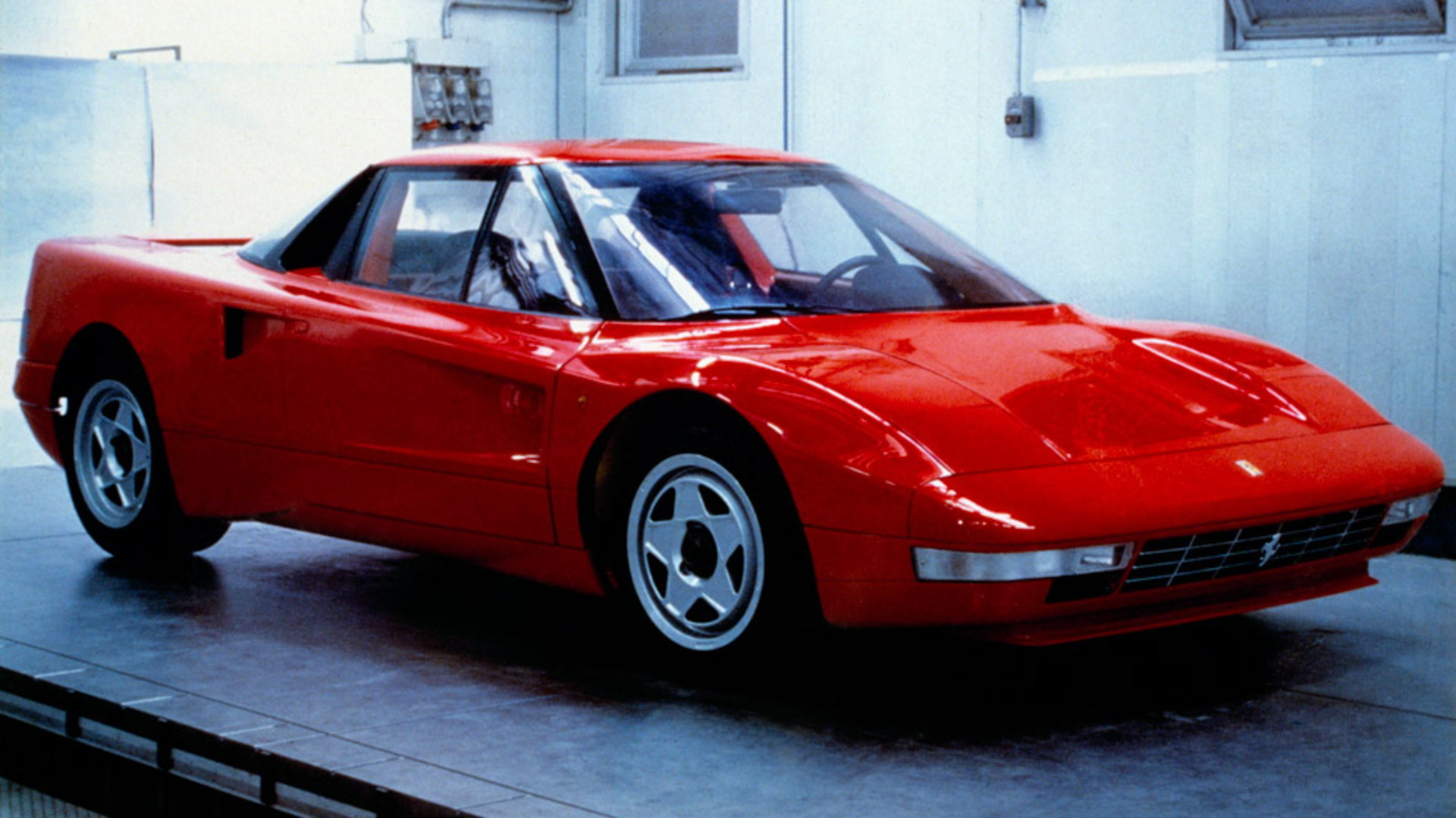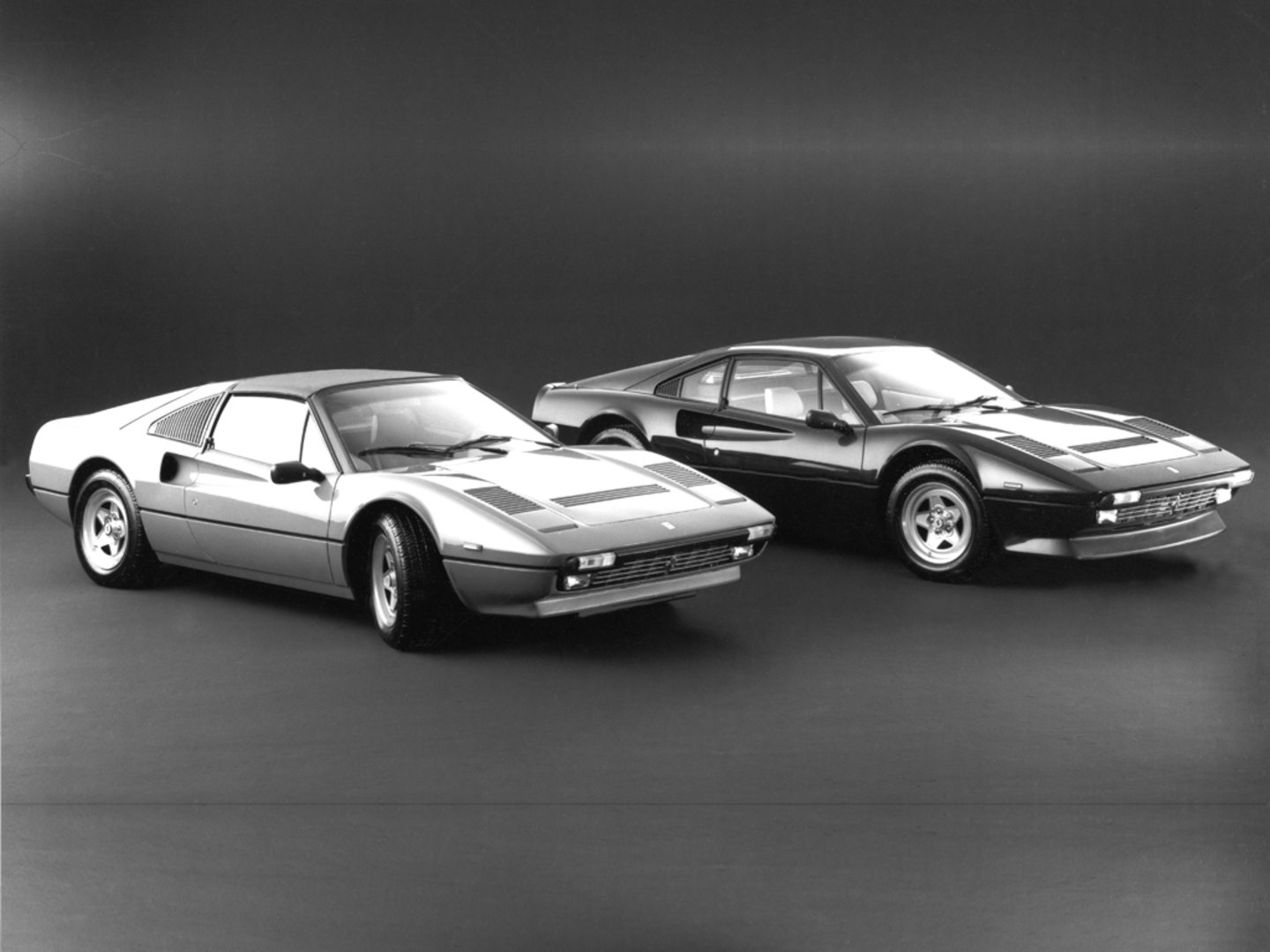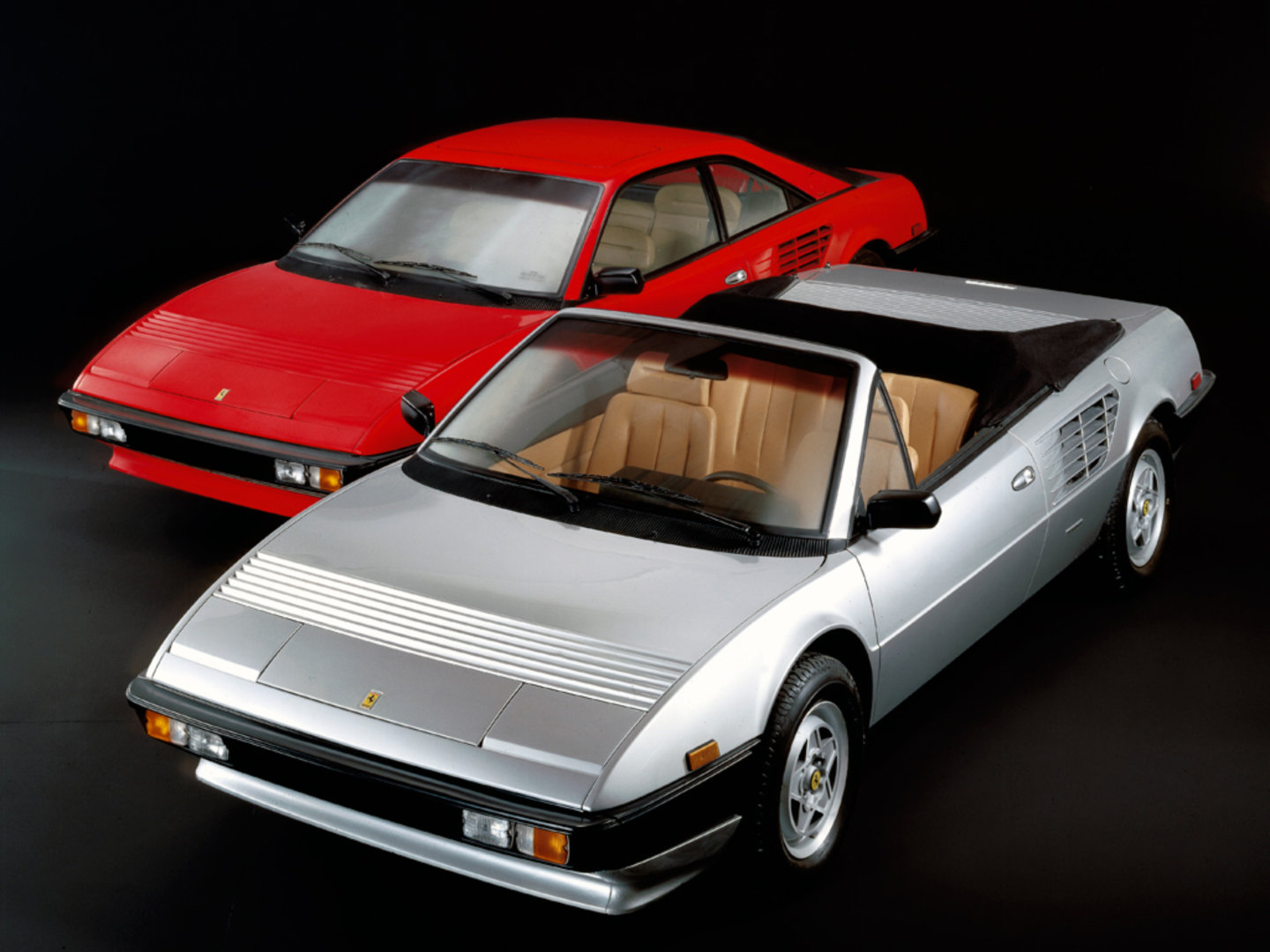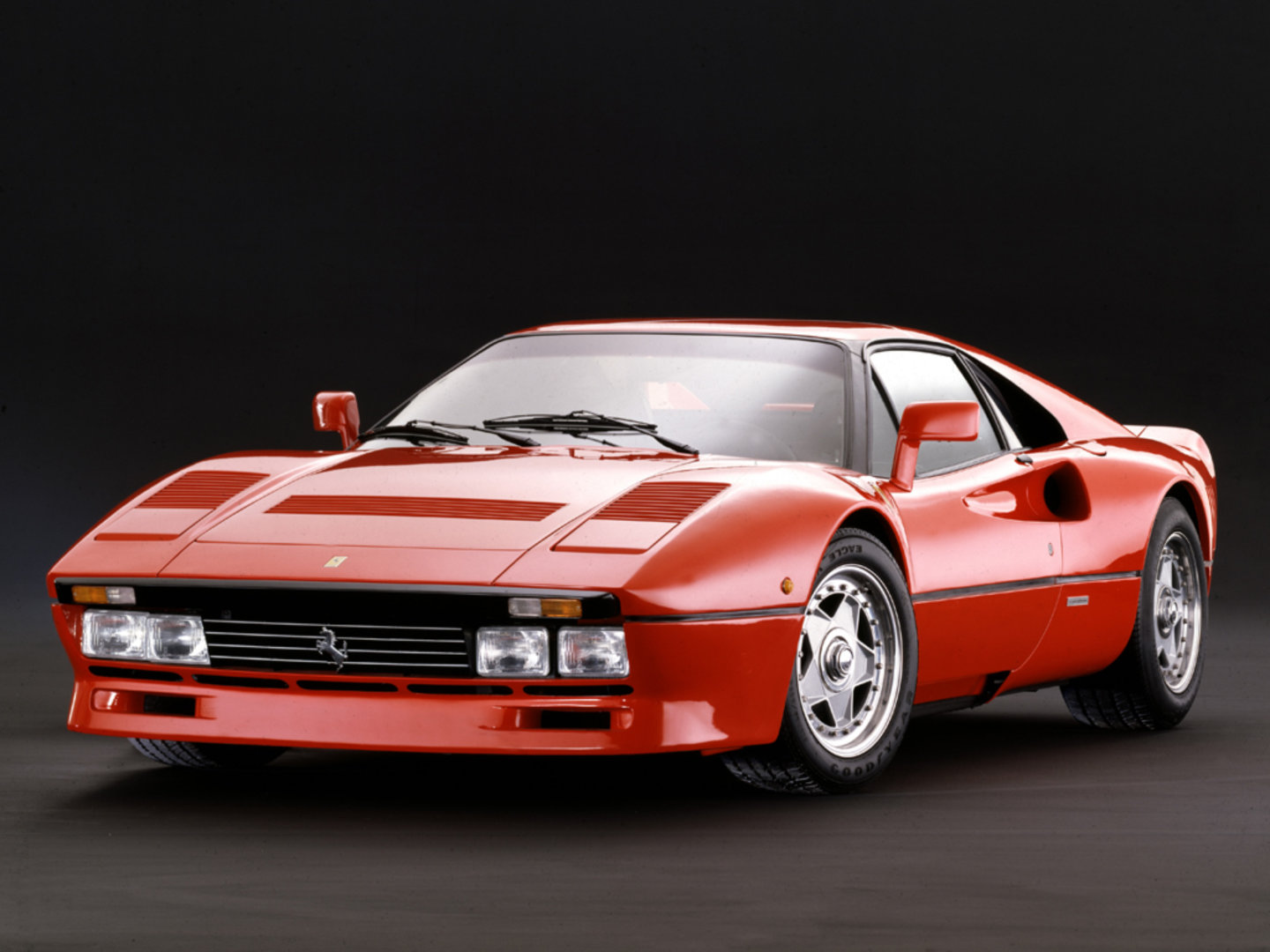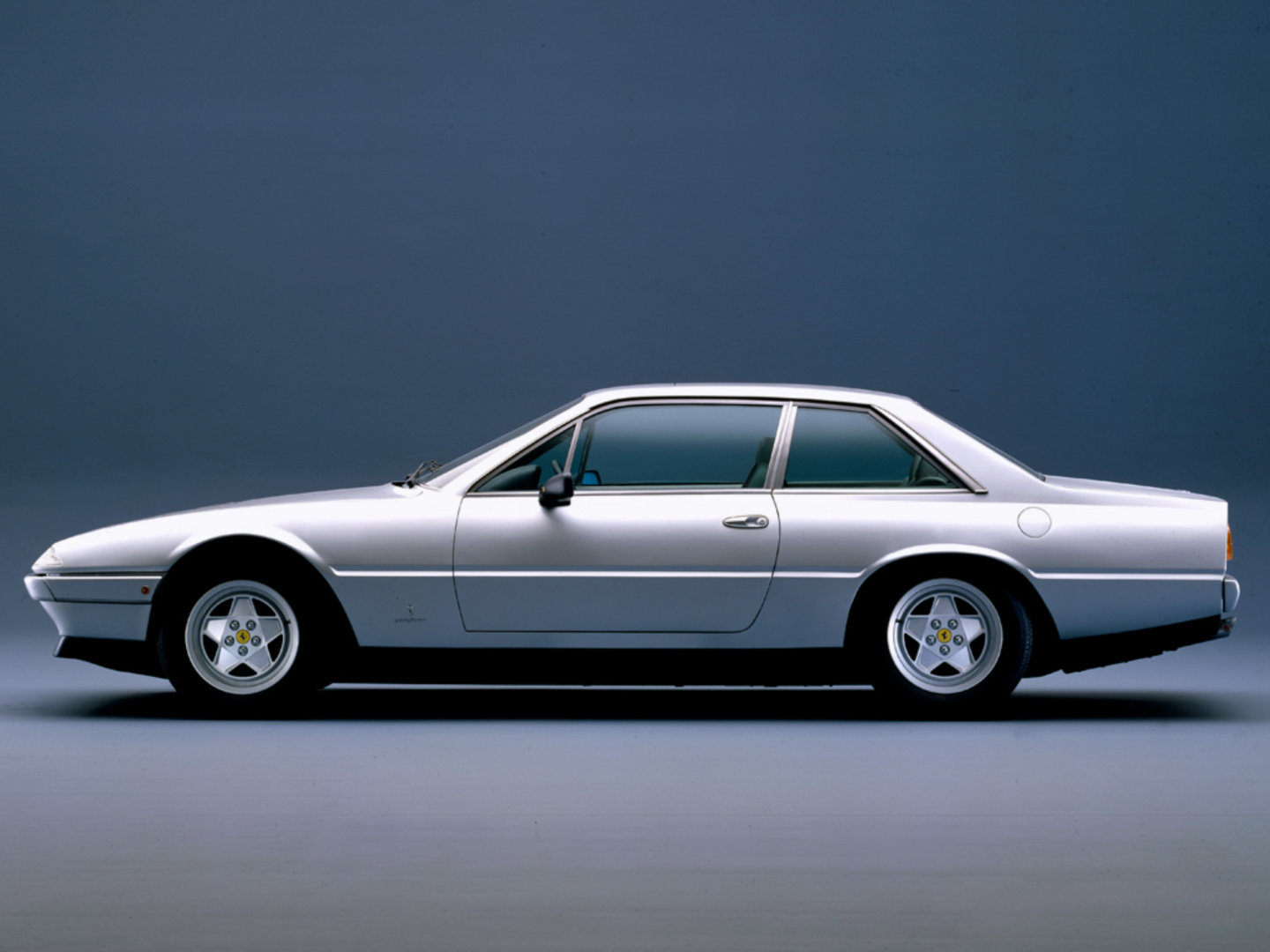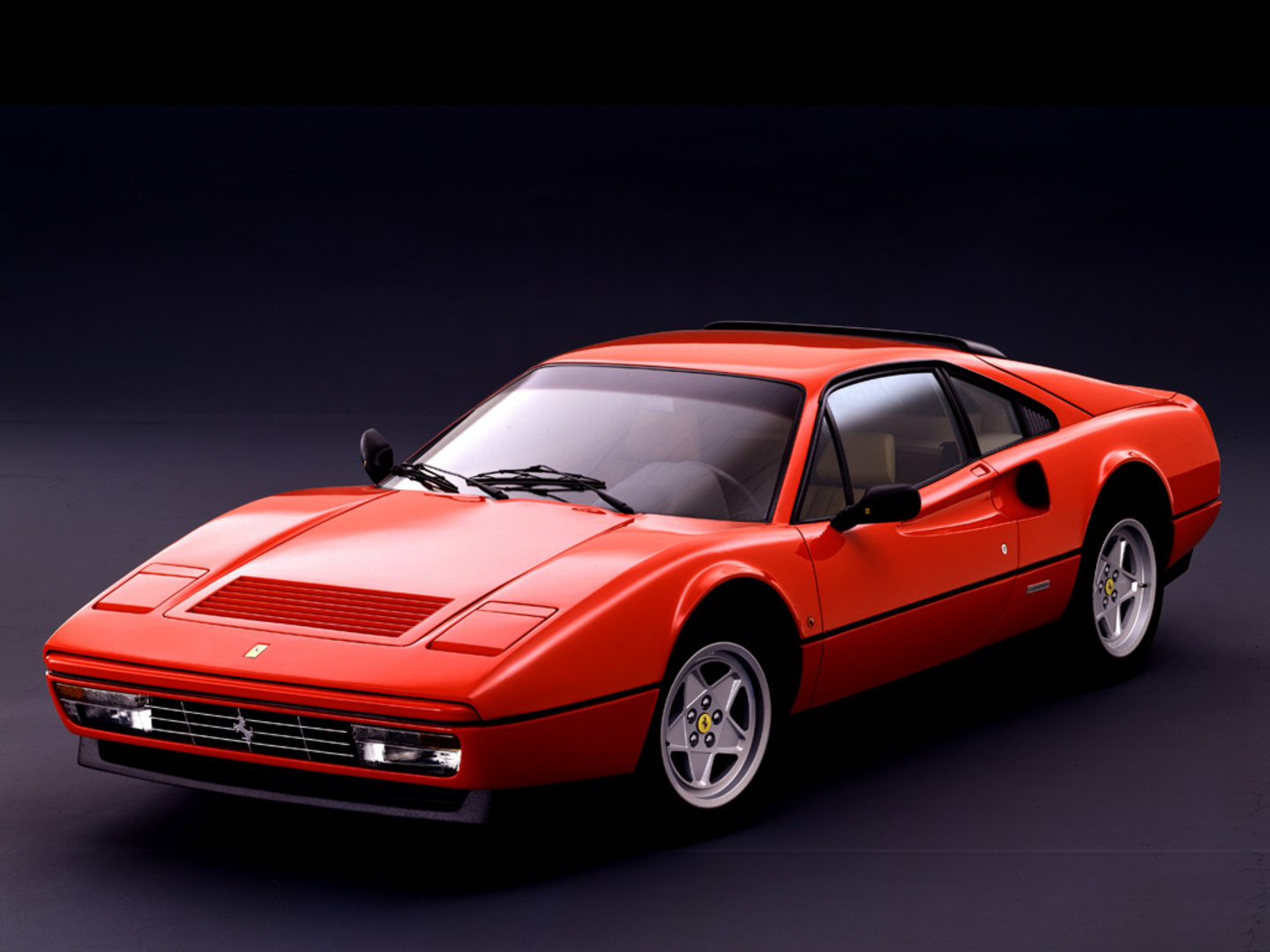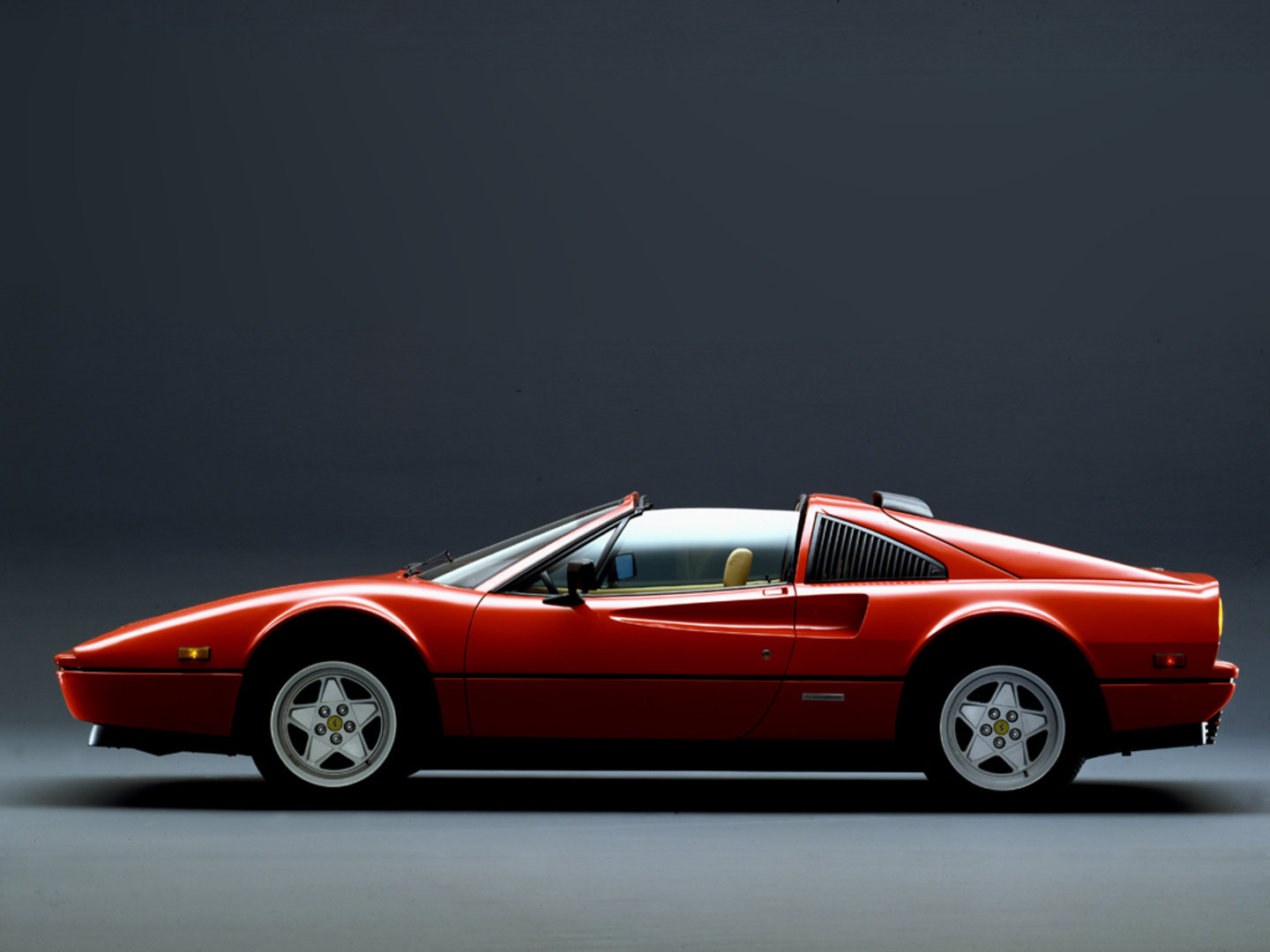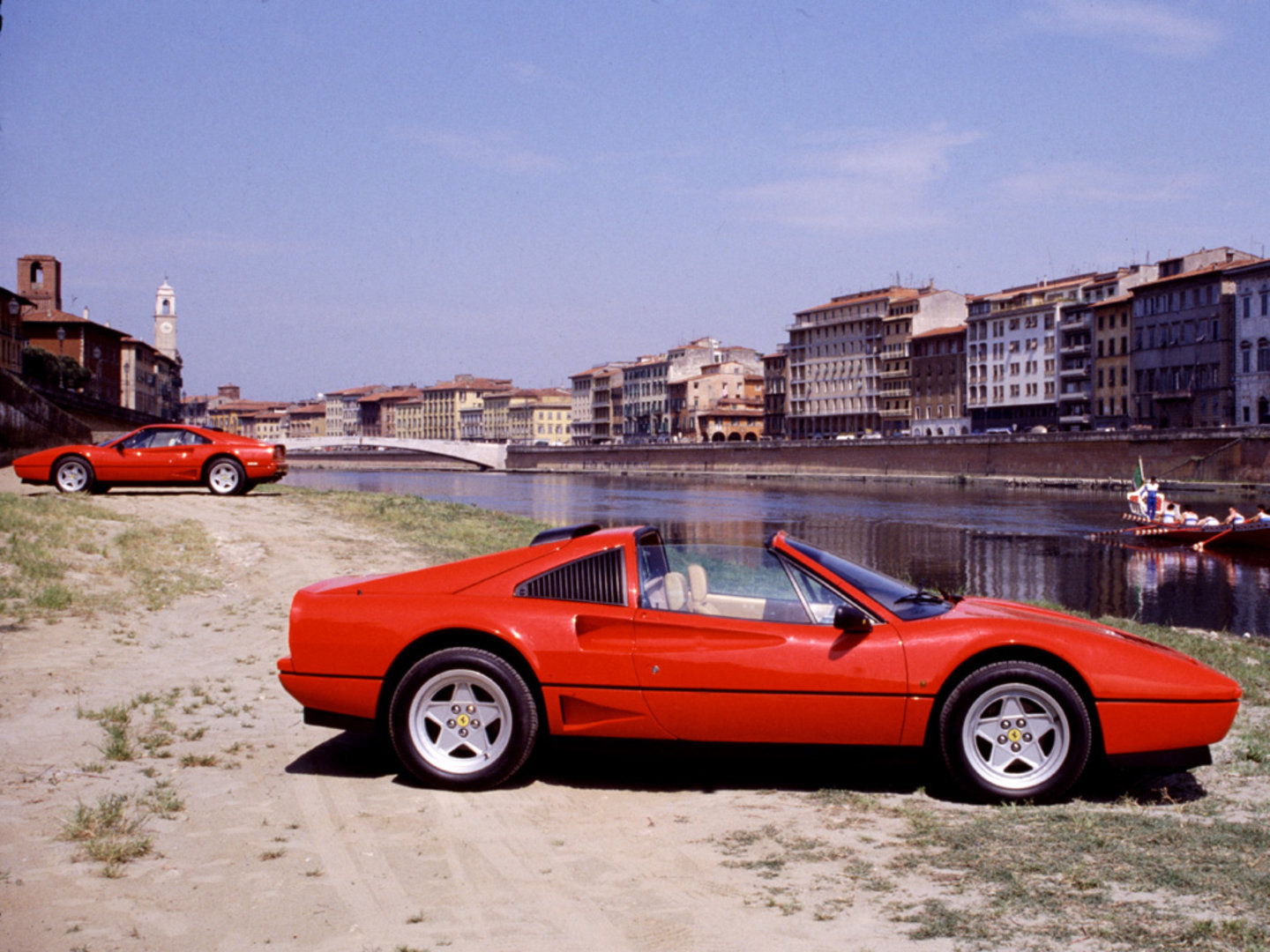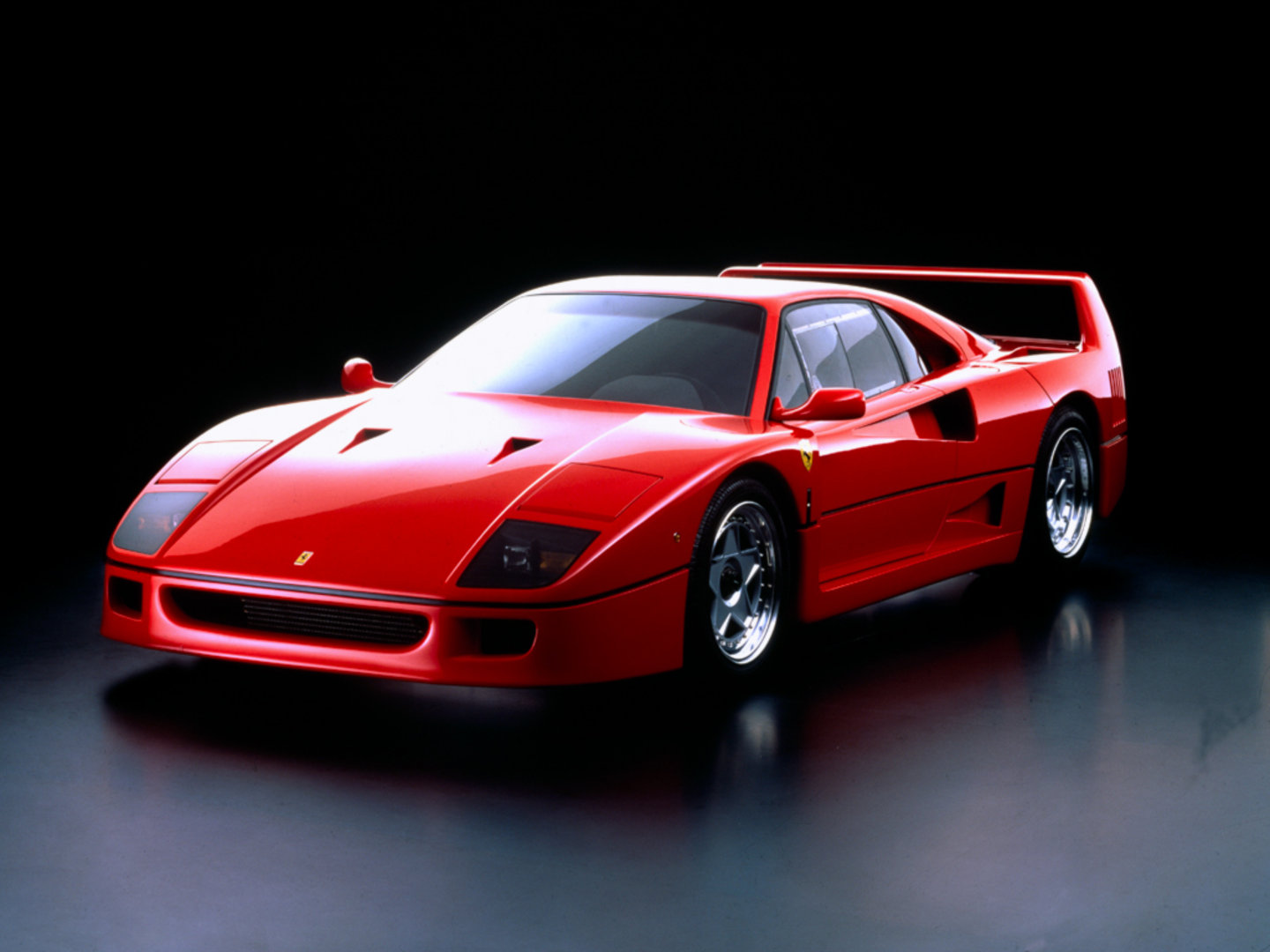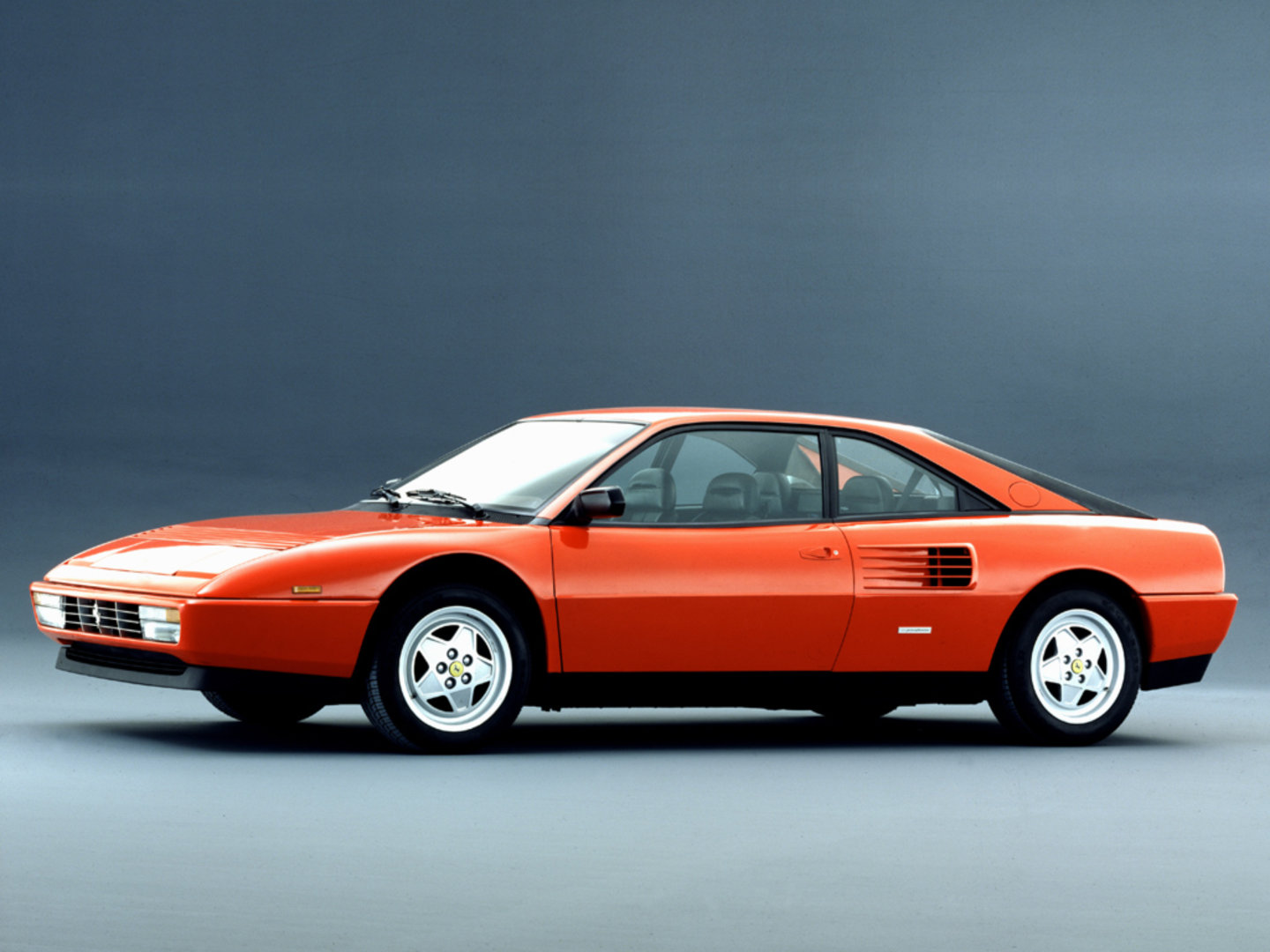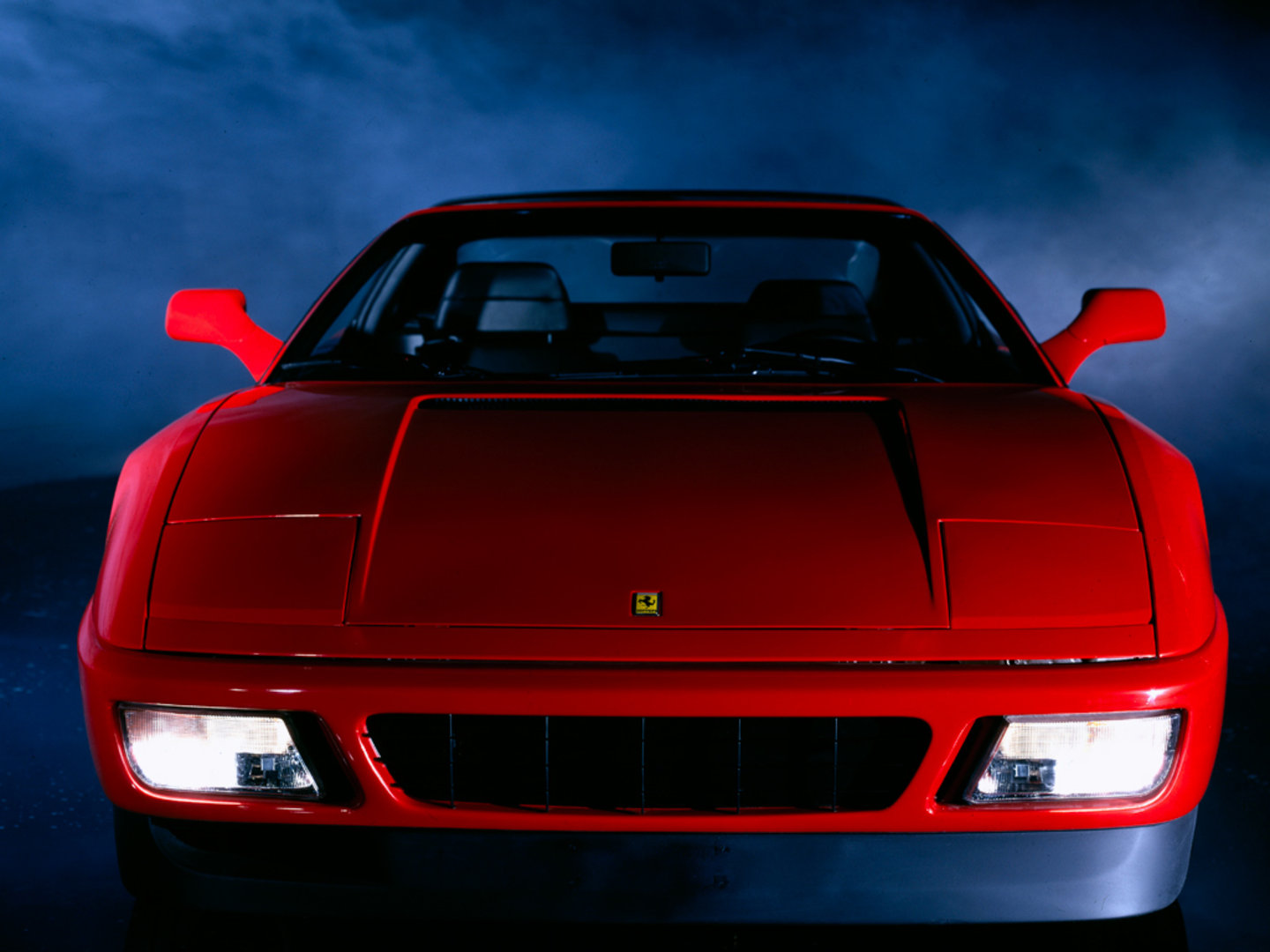Today, Carrrs.com presents Ferrari history of the 80s – the return of Niki Lauda and the death of Enzo
In the 1980s the Ferrari team entered a period of crisis, culminating with the death of Gilles Villeneuve in Belgium in 1982 and a nearly-fatal accident for Didier Pironi in Germany the very same year.
Enzo Ferrari died in 1988, at the age of 90. The last new model he commissioned was the specialist F40. Fiat increased its stake in Ferrari to 90% after buying the shares of its founder. Former Sporting Director Luca Cordero di Montezemolo was appointed President in 1991.
Ferrari Mondial 8 (1980)
Unveiled to the waiting world at the 1980 Geneva Salon, the new Mondial 8 was very much the successor to the 308 GT4, and the styling marked the return of this high-performance, mid-engined, V8-powered 2+2 coupé to the Pininfarina fold. The Mondial 8 featured a wheel base 10 cm longer than the old model, thereby affording more space to the back seats. Good anti-corrosion treatment, lots of attention to detail and a more ergonomic interior, plus a class-leading high-performance engine, complete the profile of what truly can be defined as Ferrari’s first car with all-round appeal.
The Mondial 8 was announced at the 1980 Geneva Salon, as the replacement for the Dino 308 GT4 model. The “Mondial” part of the model title was a reference to Ferrari’s history, referring to the mid fifties sports racing model of that name, whilst the figure “8″ was for the number of cylinders in the engine. It was the first Ferrari production road car to be fitted with fuel injection as standard equipment from new.
Ferrari 308 GTB Quattrovalvole (1982)
The transition from carburettor to fuel injection and the introduction of new anti-pollution laws all had a sizeable impact on the power of the 308 GTBi compared to its predecessor, the 308 GTB. Research to remedy this situation was quickly undertaken and soon showed that four valves per cylinder offered the optimal solution. This innovation saw the engine make up its lost horsepower and the car regain position as the reference point in its category.
The 308 GTB Quattrovalvole succeeded the 308 GTBi, and was presented at the 1982 Paris Salon. The Quattrovalvole part of the model name referred to the four valves per cylinder heads on the engine, which provided increased power over the preceding model.
Ferrari 308 GTS Quattrovalvole (1982)
As with the preceding 308 GTB and 308 GTBi models there was a targa roof version available, which was called the 308 GTS quattrovalvole. This version is easily identifiable by the removable black roof section and the satin black triangular shaped louvres covering the glass in the sail panels.
Both QV models can also be identified by a revised radiator grille and bumper, an air outlet louvre in the front lid and new door mirrors featuring a small enamel shield on the casing. The 308 GTS Quattrovalvole, with a removable targa roof, succeeded the 308 GTSi, and was presented at the 1982 Paris Salon concurrently with the 308 GTB Quattrovalvole model. The Quattrovalvole part of the model name referred to the four valves per cylinder heads on the engine, which provided increased power over the preceding model.
Ferrari Mondial Cabriolet (1983)
Nine years after its last open-top car (the 365 GTS4) had gone out of production, Ferrari came back with a 2+2 spider. By a bit of canny engineering, Pininfarina managed to give the canvas top the same line as the coupé. In fact, it extended rearwards to include the two buttresses either side of the rear window, and Pininfarina’s clever mechanism allowed the hood to fold away neatly behind the seats.
A cabriolet version of the Mondial Quattrovalvole was first shown to the press at the Military Academy in Modena in September 1983, at a conference hosted by Enzo Ferrari, the model making its show debut at the Brussels Salon the following January. This model was aimed specifically at the sunny climes of the American west coast, where the early production examples found homes, before European model production commenced in earnest. The manually operated hood of the cabriolet was quite a complex affair, which echoed the profile of the coupé when erected, complete with buttresses to the rear. An aesthetic triumph, but care had to be taken to fold it correctly, or damage could occur.
Ferrari Mondial 8 (1984)
Announced by Enzo Ferrari in September 1983, and unveiled at the Geneva Motor Show in March 1984, the GTO (also known unofficially with the 288 prefix) sparked off a wave of enthusiasm. The legendary name, the stunning styling by Pininfarina, the engine with its seemingly inexhaustible power (2.8 litres and 8 cylinders) and the widespread use of composite materials, made the GTO the closest thing to a racing car.
To meet customer demand, 272 were built instead of the planned 200: all were sold before production began. In the early years of Ferrari history most road cars produced were limited series, which gave way to more series type production in the late fifties, with the last of the limited production models being the 365 California in 1966-67. The GTO, introduced at the 1984 Geneva Salon, heralded a return to the low volume production series. Initially the reason was not to provide a select few clients with an exclusive form of transportation, but to satisfy the two hundred unit build number for homologation purposes as a Group “B” competition car.
Ferrari Testarossa (1984)
The Paris Motor Show in October 1984 saw the return of the glorious Testarossa as heir to the 512 BBi. Pininfarina’s design broke somewhat with tradition and was striking and innovative. The side intakes were larger than on the previous model and this constraint saw the introduction of the long side strakes that would become the Testarossa’s most recognisable feature.
The evolution of the 12-cylinder boxer engine saw it equipped with four valves per cylinder: the most powerful engine mounted on a production sports car at the time of its launch. The Testarossa was a model that took its name from the company’s history, being derived from the successful 500 and 250 Testa Rossa series of sports racing cars from the late fifties.
Ferrari 412 (1985)
The 412 replaced the 400i and introduced a series of improvements, the most noticeable being the higher boot line, along with a deeper front spoiler to improve the car’s aerodynamics. Pininfarina’s other interventions included re-designed sill panels, body-coloured bumper inserts, a modified alloy wheel design, clear indicator lenses and black windscreen and window surrounds.
The V12 engine was bored out to 4,942 cc (from 4,823) with a corresponding 8% increase in power (to 340 bhp) and a 9.5% increase in torque for a 0-62 mph time of 6.7 seconds, and a standing quarter mile of 14.6 seconds compared to 14.8 for the 400i. The 412 was also the first Ferrari to offer Bosch ABS as standard.
Ferrari 328 GTB (1985)
The 308 series had won universal acclaim from both customers and critics, and its natural evolution continued with the 328 GTB, a berlinetta fitted with the new 3.2-litre version of the V8. This new engine (again featuring four valves per cylinder) produced a specific output of 85 bhp per litre, compared with 82 for the 4-valve version of the 308.
Pininfarina’s original design, which was still both attractive and elegant, was revised to further improve the aerodynamic characteristics of the 308 models.
The 328 GTB model, together with the targa roof 328 GTS variant, were the final developments of the normally aspirated transverse V8 engine 2 seat series. The 328 figures in the model title referred to the total cubic capacity of the engine, 3.2 litres, and 8 for the number of cylinders. The new model was introduced at the 1985 Frankfurt Salon alongside the Mondial 3.2 series.
Ferrari 328 GTS (1985)
Pininfarina paid particular attention to styling details that influenced the car’s CD and aerodynamic lift characteristics – with impressive results. Cabin ergonomics were improved and the shape of the seats revised to better suit the sporty driving style this type of car deserved. On all versions, low profile tyres and 16″ alloy wheels were available as an option.
The 328 GTS model, together with the fixed roof 328 GTB, were the final developments of the normally aspirated transverse V8 engine 2 seat series. The 328 figures in the model title referred to the total cubic capacity of the engine, 3.2 litres, and 8 for the number of cylinders. The new model was introduced at the 1985 Frankfurt Salon alongside the Mondial 3.2 series.
Ferrari 3.2 Mondial (1985)
The new 3.2 version of the Mondial offered a more powerful and flexible V8 that significantly improved the car’s performance. New, more efficient and elegant light clusters, a more ergonomic interior and better fit and finish completed the profile of this 2+2. It was comfortable and spacious, and offered excellent visibility for a car in its category.
The Mondial 3.2 model succeeded the Mondial Quattrovalvole, and was available in both coupe and cabriolet form, being announced concurrently with the 328 series of 2 seat models at the 1985 Frankfurt Salon. The 3.2 in the model title referred purely to the cubic capacity of the engine in litres. When necessary, the 3.2 could turn in the kind of dynamic performance expected of a thoroughbred Ferrari.
Ferrari Mondial 3.2 Cabriolet (1985)
In 1985 the Mondial 3.2 Cabriolet was equipped with the new 3.2-litre engine. This increase in power made it an even more exclusive car than before: no rival four-seater cabriolet of similar engine size could offer comparable performance. As with the 328 GTB and GTS, Pininfarina improved the styling and aerodynamics of this car, redesigning several bodywork details.
The Mondial 3.2 model succeeded the Mondial Quattrovalvole, and was available in both coupé and cabriolet form, being announced concurrently with the 328 series of 2 seat models at the 1985 Frankfurt Salon. The 3.2 in the model title referred purely to the cubic capacity of the engine in litres. This model saw the first change in the body styling, with revised front and rear ends incorporating smooth body colour bumper assemblies, and a radiator grille with front light and radiator grille assemblies that mirrored those of the 328 cousin.
Ferrari GTB Turbo (1986)
Acquired in Formula 1, the turbo-charged 2-litre Ferrari V8 was developed further. The results were very good: specific power was raised to a record value of 127 bhp per litre and maximum torque was not only increased, but was now also available at a lower engine speed, substantially improving the car’s flexibility. Turbo boost came in gradually from as low as 3,000 rpm, making the car much more manageable.
In 1986 the Italian market “tax break” model, the GTB Turbo, together with its targa roof variant, the GTS Turbo, became the final developments of the transverse V8 engine 2 seat Ferrari series.
Ferrari GTS Turbo (1986)
The convertible version of the GTB Turbo was fitted with the same engine and offered similar out-and-out performance. The body styling and cabin were the same as the 328 series and included all the latest aerodynamic and ergonomic improvements added by Pininfarina. It is interesting to note that this model, with its 2-litre turbo-charged V8, offered performance comparable to the 328, which was powered by the naturally aspirated version of the 3.2-litre.
In 1986 the Italian market “tax break” model, the GTS Turbo, together with its fixed roof cousin, the GTB Turbo, became the final developments of the transverse V8 engine 2 seat Ferrari series. Essentially the GTS Turbo was, as the name implies, a turbocharged variant of the 328 GTS, but fitted with a 2 litre engine. Like the 328 GTS, the GTS Turbo model presented a softening of the wedge profile of its predecessor, the 208 GTS Turbo, with a redesigned nose that had a more rounded profile, that was complimented by similar treatment to the tail valance panel.
Ferrari F40 (1987)
The F40 was built to celebrate Ferrari’s 40th anniversary. A very fast berlinetta designed by Pininfarina, it was built mainly from composites. Its sophisticated high-performance, turbo-charged running gear combined with a first class chassis gave it the kind of great dynamic prowess that was close to that of a racing car.
The F40 continued the extreme machine philosophy cultivated by its predecessor the GTO, but took it to new levels. It was greeted with great enthusiasm by enthusiasts and the number of examples eventually built exceeded the company’s wildest dreams. During the mid eighties there were various spy pictures in motoring magazines of a radical prototype(s) around the streets of Maranello, with all sorts of hypothesis as to its raison d’etre. It subsequently transpired that the car was what became known as the “Evoluzione”, a test bed for the upcoming F40.
Ferrari 408 4RM (1987)
Just two prototypes of this model were built. The first, a red car, was completed June 1987 and sported chassis no. 70183, while the second, chassis no 78610, was yellow and is now exhibited in the Galleria Ferrari in Maranello. What made this such an unusual model was that it featured four-wheel drive using an innovative hydraulic system.
The two cars were built to test different production methods too. The first had a welded stainless steel body while the second a glued aluminium one. Mauro Forghieri was in charge of the project until he left Ferrari in the spring of 1987 too.
Ferrari Mondial T (1989)
The Mondial T represented a further step forward in the evolution of this most singular Ferrari: a truly high-performance car with a mid-mounted engine and room for four. The letter ‘T’ was inspired by the F1 312 T single-seater, which had just won the Formula 1 World Championship and also used the longitudinal engine/transverse gearbox layout.
This new configuration allowed the whole drive-train of the Mondial T to be lowered by 13 cm, with significant benefits in terms of road-holding and handling. The final development of the Mondial series was the Mondial t model, which was announced in 1989, and was the most radical overhaul of the model during its production run.
Ferrari Mondial T Cabriolet (1989)
The new drive-train layout with longitudinal engine and transverse gearbox, first used on the 348 TB and TS, was also fitted into the Cabriolet version of the Mondial. This new solution increased the space available in the cabin in all versions, and the cabin was also completely redesigned to improve ergonomics and comfort.
The Pininfarina styling was slightly revised, making it even more elegant, and bifocal headlights were fitted to substantially increase beam intensity. The Mondial t cabriolet was announced concurrently with coupé version in 1989, and similarly was the most radical overhaul of the model during its production run.
Ferrari 348 TB (1989)
Heir to the 328 GTB, the 348 TB was actually a completely new car, which offered a new interpretation of the two-seater mid-engined V8 berlinetta. The body combined styling cues from the Testarossa – along the flanks – with ones from classic models of the past (such as the front-end treatment, reminiscent of the 375 MM).
Mated to a new transverse gearbox, the longitudinally-mounted engine produced 300 bhp (221 kW), which the new, high torsional strength, semi-monocoque chassis transferred to the road extremely efficiently.
In the autumn of 1989 the era of the transverse V8 engined Ferrari range, which had started with the presentation of the Dino 308 GT4 at the Paris Salon in October 1973, reached the end of the road when the 328 series ceased production. The replacement was the all new 348 model, presented at the 1989 Frankfurt Salon, fitted with a longitudinally mid-mounted V8 engine, initially available in tb (“b” for berlinetta) or ts (“s” for spider, but actually a targa top) form.
Ferrari 348 TS (1989)
The convertible version of the 348 TB, with a removable hard top, was powered by the same drive-train as the berlinetta version, giving it equivalent performance. The body was again styled by Pininfarina. The impressive dynamic characteristics of both versions were so ideally suited to the race track that in 1993 a Challenge was established especially for these cars.
The 348 ts model was presented concurrently with fixed roof 348 tb at the 1989 Frankfurt Salon, and was fitted with a longitudinally mid-mounted V8 engine. The 348 in the model name referred to the 3.4 litre engine capacity and eight cylinders, whilst the “t” in the designation referred to the transverse gearbox mounted at the rear of the engine.
Read more: Great History of Ferrari: 1940-1950, Great History of Ferrari: 1960s, Great History of Ferrari: 1970s


